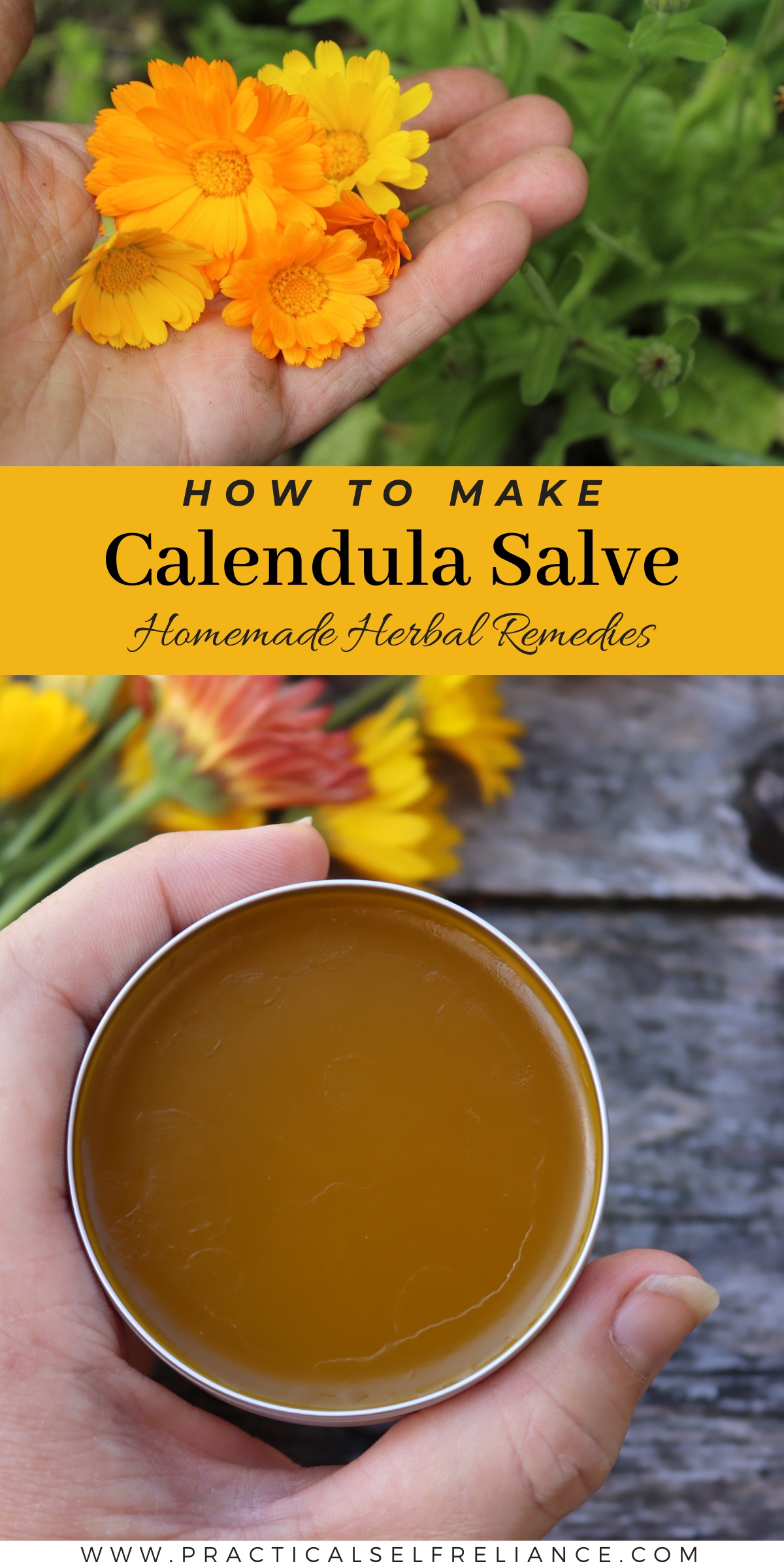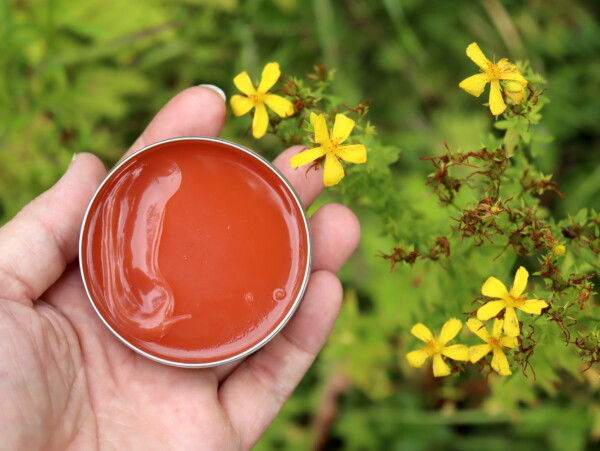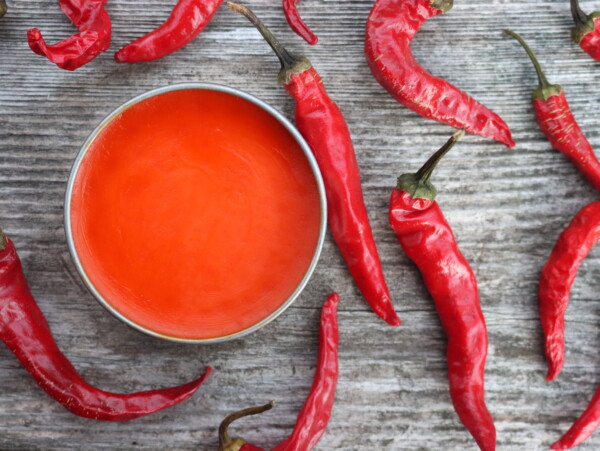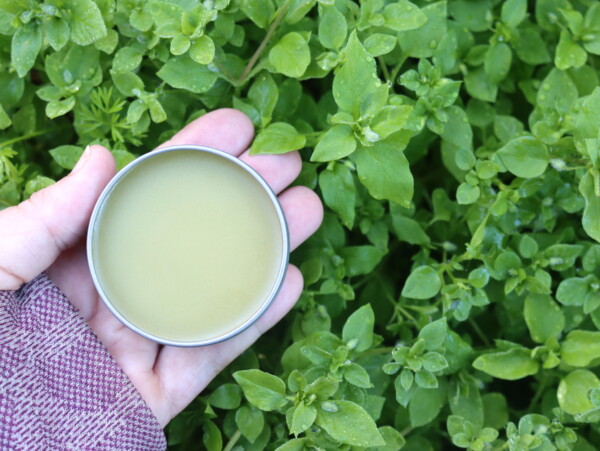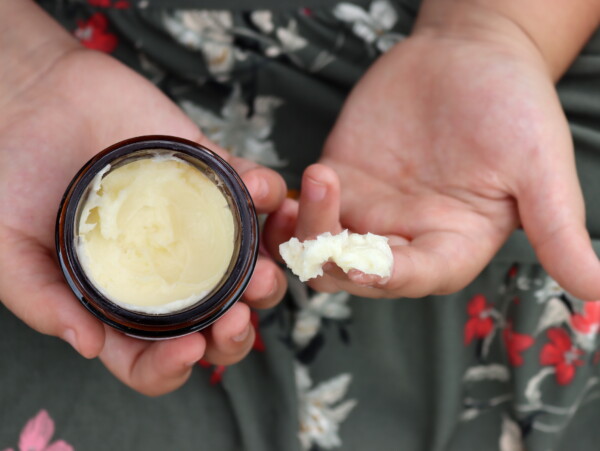Affiliate disclosure: This post may contain affiliate links. Please see our Privacy Policy.
Calendula salve is my go-to remedy for anything skin-related, especially burns. With the humble, easy-to-grow calendula, you can create your own amazing salve for soothing eczema, diaper rash, minor wounds, acne, and just about any other skin irritation.
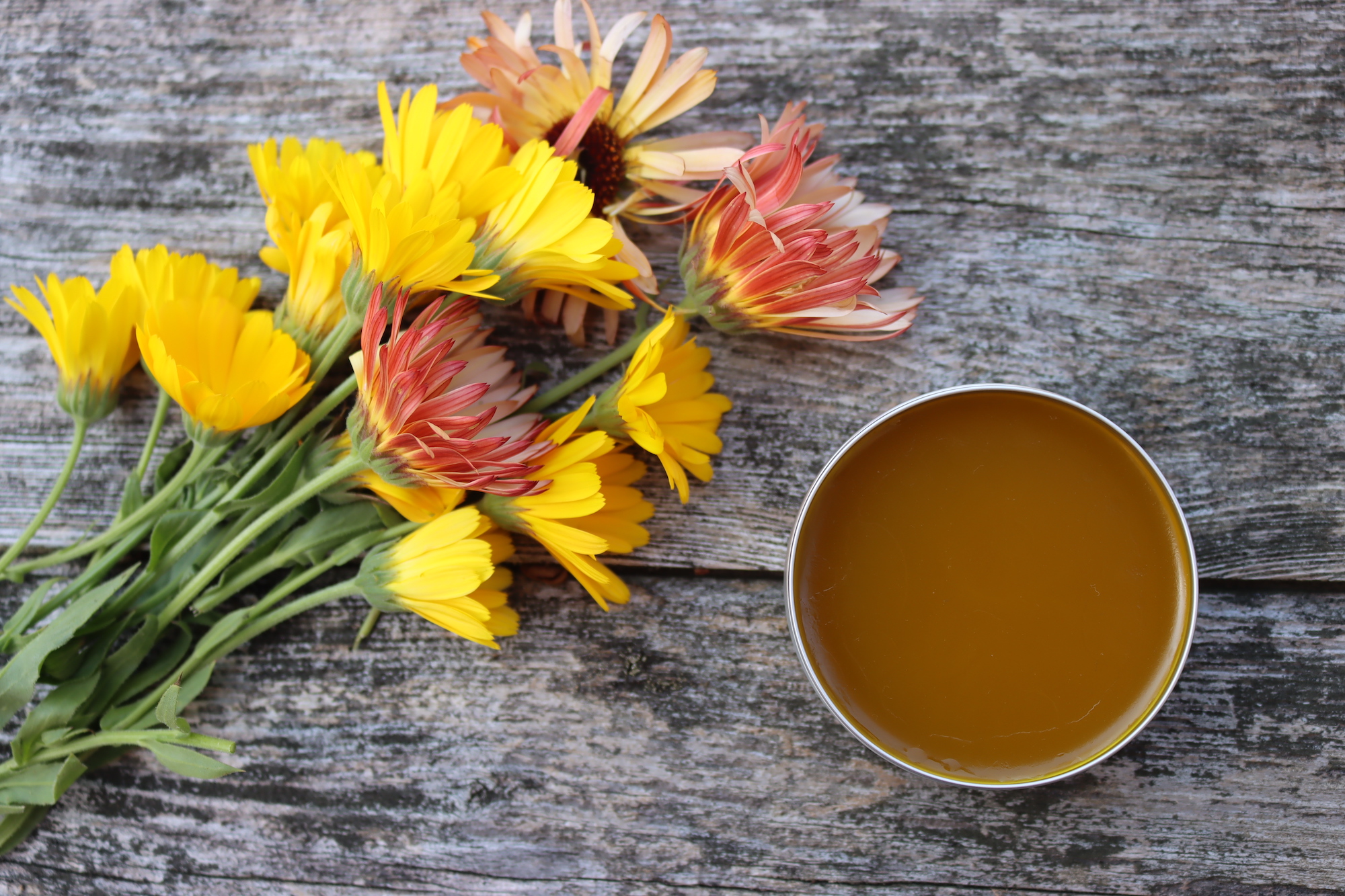
Calendula (Calendula officinalis), or pot marigold, is an easy-to-grow charming bright orange or yellow flower with a range of uses. It should not be confused with other true marigolds that you may find in the garden, which are members of the Tagetes genus. In the garden, it’s an excellent companion plant and may act as a pest deterrent. In the kitchen, it’s a tasty and bright-colored substitute for saffron, natural dye, or food coloring.
Calendula’s real value lies in its use as a medicinal herb. Herbalists consider it among the most potent skincare herbs with anti-inflammatory and soothing properties. Modern research has indicated that calendula may help speed wound healing. This soothing salve is one I like to keep in the cabinet as part of our everyday first aid kit for life on a homestead. I’ve had success using it to soothe poison ivy, minor cuts, and dry, cracked skin.
If making salve doesn’t sound like a fun project, I suggest checking Etsy for herbalists making it on a small scale. Calendula salve is not easy to find in most stores, but it is popular with herbalists.
Want to grow calendula for your own salves and medicine? Look for calendula cultivars that are bred for medicinal use and have high resin concentrations. Some of the newer ornamental cultivars lack the same concentration of resin, which is necessary for medicinal use. You can find seeds at reputable seed producers like Mountain Rose Herbs and Southern Exposure Seed Exchange.
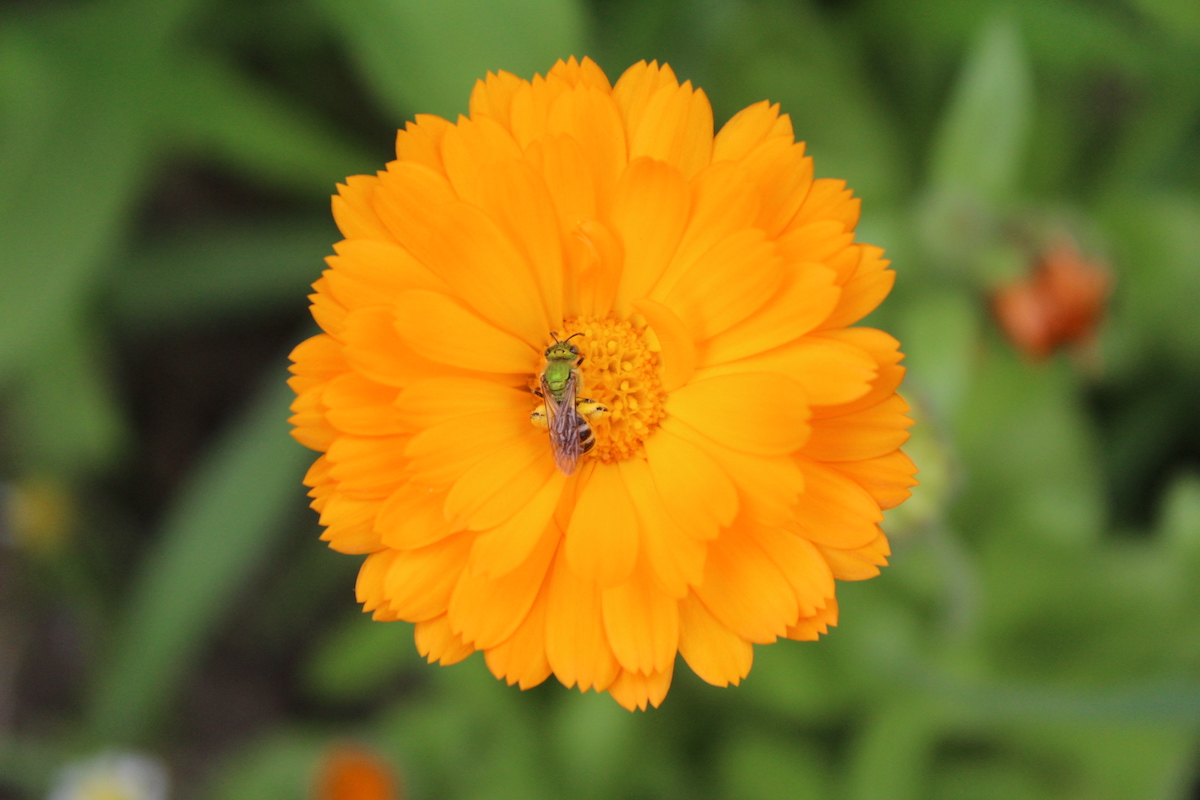
Always consult your physician or a clinical herbalist before using new herbal products or remedies. You could have an allergic reaction to calendula salve, especially if you have an allergy to plants in the daisy or Asteraceae family. Herbal remedies can also interact with certain medications. Be sure that you are 100% certain of your plant identification, especially when working with wild plants. The following recipe and information are based on my personal experience, but I don’t have any medicinal degrees or certifications that would allow me to advise you on your health.
Benefits of Calendula Salve
Calendula is native to the Mediterranean and has been used medicinally since at least the 12th century. Its prowess as a skin and wound herb meant that people spread it far and wide, growing it in gardens wherever they lived. During the American Civil War, most doctors carried calendula petals to help stop bleeding and heal wounds.
Several modern lab studies have indicated that calendula may speed wound healing. One fascinating study from 2016 tested a calendula spray on diabetic foot ulcers. Even with modern medical intervention, these ulcers can be especially challenging to heal. The study found that out of 41 adults, 78% had complete wound closure.
Calendula is an excellent salve for less severe conditions, too. It has antifungal and antimicrobial properties. These properties may be why calendula, a 2012 lab study, indicated that it may be helpful for acne.
I always keep a patch of calendula growing in the garden and some calendula salve in our first aid kit. It’s especially helpful for outdoorsy families and quickly soothes poison ivy, eczema, scraped knees, and more.
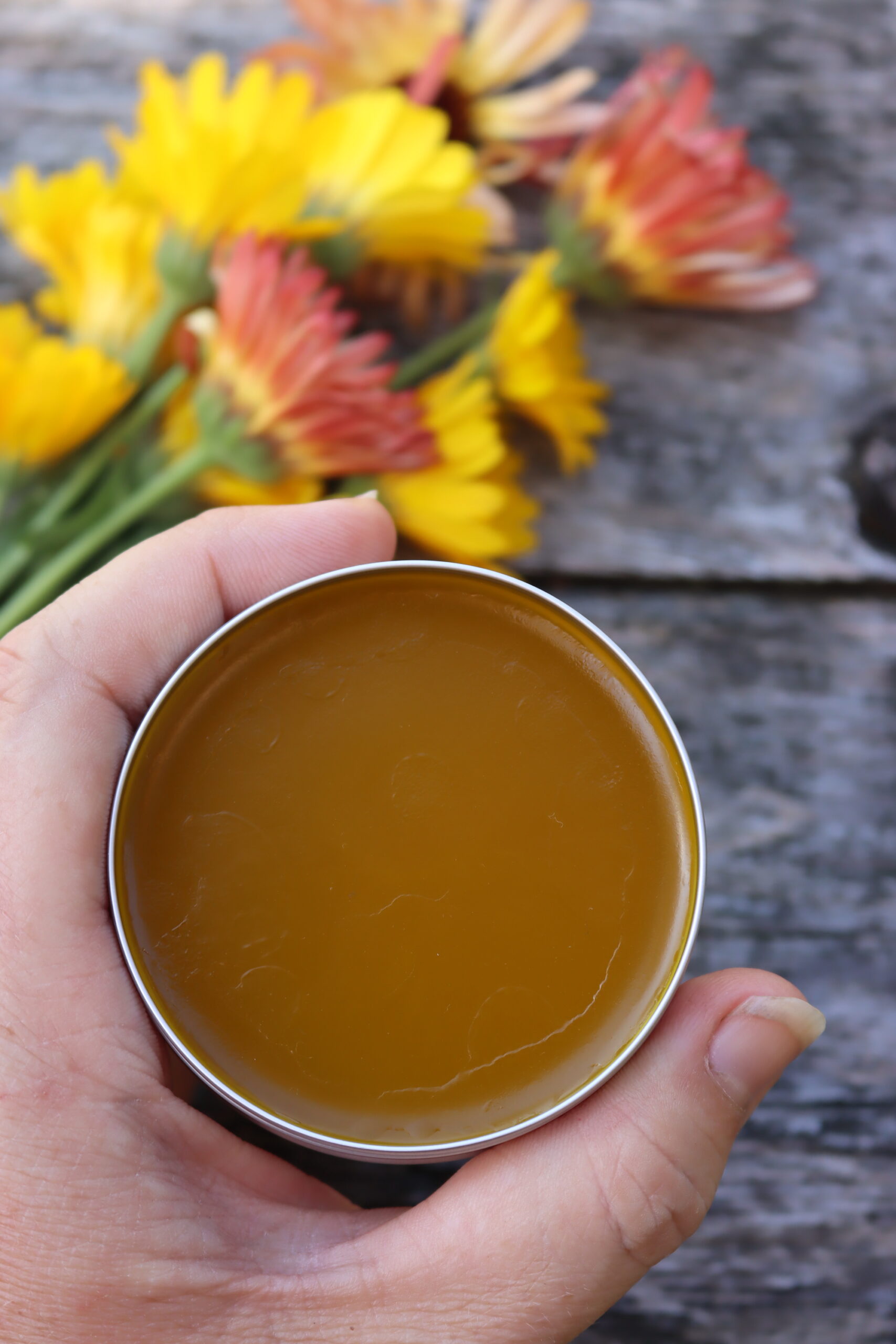
Supplies & Equipment
Making calendula salve is simple! You don’t need an herbalist certification or expensive tools and equipment; you just need a couple of basic supplies.
First, you need a double boiler to gently heat your oil. Many herbalists who make salves get one like these, but you don’t need to buy one. I use a DIY double boiler made with a heat-proof container like a mason jar and a small pot.
Second, you need a neutral oil to infuse with calendula. I usually use olive oil, as we keep it on hand, but you can also use almond, coconut, grapeseed, or jojoba oil. All of these options are soothing, but you can experiment to see what works best for your skin.
After we have our oil, we need something to thicken it. I like using beeswax pellets as they’re easy to work with. However, you can also cut beeswax from a large block or use any beeswax you have on hand.
I also suggest picking up a small kitchen scale. It’s incredible handy for weighing beeswax for salves as well as herbs and other ingredients for other medicinal preparations. Alternatively, you can buy your beeswax in 1 oz bars like these.
Finally, you’ll need containers for your finished calendula salve. I love these small 2 oz tins. They’re a great size for salves, are easy to take on trips, and look great as gifts. If you prefer glass, you can also use the small quarter-pint mason jars.
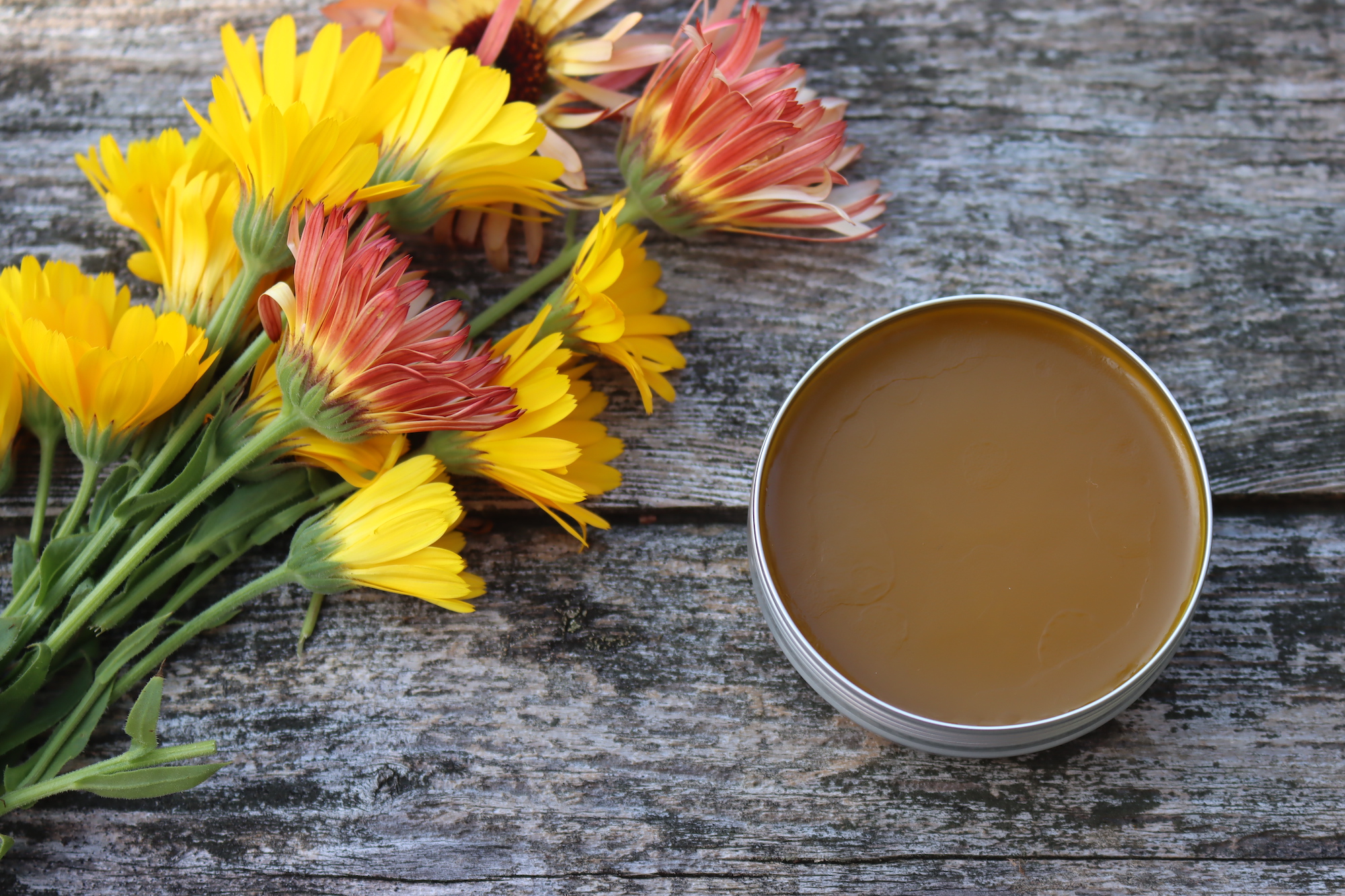
How to Make Calendula Salve
Making calendula salve is surprisingly easy. It usually only takes about 30 minutes of hands-on prep. The rest is just waiting time. I like to use the rapid infusion method, which cuts the infusion time for the herbs down from three to six weeks to just a couple of days. If this is your first salve, you can always refer to my guide to healing herbal salves, which goes over the entire process in greater detail.
For this warm, rapid infusion method, I use fresh plant material. However, if you’re using the longer, cold infusion process, I recommend you use dry plant material, as fresh material could spoil or go rancid during the longer infusion process.
I have a separate guide for making calendula oil with dried calendula flowers and a detailed tutorial on making herbal-infused oils with either dried or fresh herbs if you’re looking for more guidance.
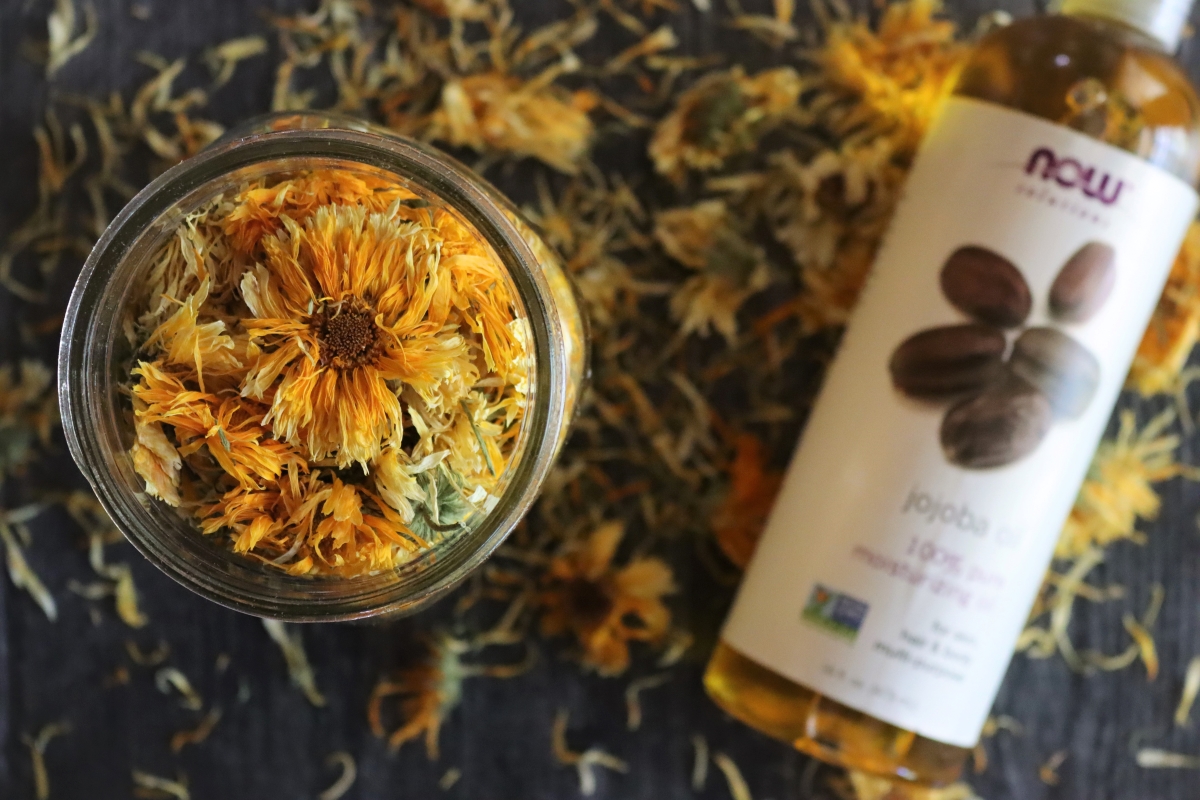
To make my calendula infusion, I start by harvesting fresh calendula flowers. I like to harvest them around mid-morning, just after the dew has dried. Clip the stems with a pair of scissors or shears just below the flowers. Your fingers are going to get sticky! The stickier, the better; it means your plants are full of medicinal resin.
It’s not quite as pretty, but it’s best to roughly chop up your flowers with scissors or a knife and cutting board. This creates more surface area for the oil to penetrate the flowers.
Fill a mason jar with your chopped flowers so that they’re packed down firmly. You can chop and pack your flowers right in the garden, so you know how much you need if that works best for you. If I’m doing a big calendula harvest, I usually bring them back to the porch. Some I use for salves, while others I dry to make calendula tincture and tea.
Next, you need to cover your calendula flowers with the neutral oil you selected, filling your mason jar. As I mentioned above, several oils work well, but many people already have olive oil on hand.
Now, prepare your double boiler, filling the bottom with about 1 inch of water. If you’re going with a DIY setup, you’ll do the same, adding 1 inch of water to the bottom of your small pot or slow cooker. If you’re using a slow cooker, ensure your jar isn’t sitting directly on the bottom; set it up on a trivet, old cotton dish towel, or canning jar rings.
Slowly heat the water in the double boiler to 110 to 120 degrees. Slow and gentle is key here! We don’t want to cook the herbs; this will result in a poor salve. We just want to warm them up and infuse the carrier oil. The salve won’t be as potent if the oil gets too hot.
Now, you need to keep the water steady between 110 and 120 degrees F to infuse the calendula over the next 24 to 48 hours. Generally, I bring the water up to temperature and turn it off. I do this overnight, too. After turning it off, I’ll cover the pot with a towel to help keep the temperature up and keep the infusion going. I never leave the heat on for a prolonged period because this can heat up the herbs too much. As time passes, you may need to add more water to the double boiler to keep it at the same level as it evaporates.
After 24 to 48 hours, when you think the infusion is finished, you can make your salve! Strain all the calendula flowers out of the carrier oil and pour the oil back into your heatproof container or double boiler. Place the container into a pot of simmering water or heat the double boiler and add the beeswax to the oil. Stir the beeswax until it’s entirely melted and mixed into the oil.
If you don’t have a kitchen scale but have beeswax pellets, you can get a fairly accurate measurement with a tablespoon. One ounce of solid beeswax is roughly equivalent to one heaping tablespoon of beeswax pellets.
Once the beeswax is completely incorporated and the mixture is smooth, pour the salve into your jars or tins and let it sit for at least 30 minutes to firm up before using. I always try to use salves up within a year. While you can continue to use them after this period, they will slowly lose some of their potency.
Ways to Use Calendula
Want to learn more about growing and using calendula?
- How to Grow Calendula
- How to Make Calendula Oil (& Ways to Use It)
- Calendula Tincture
- Herbal Digestive Calendula Tea from Chestnut School of Herbal Medicine
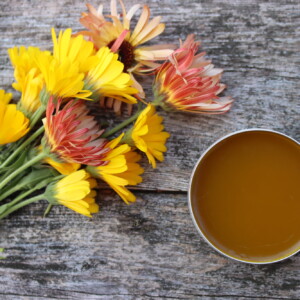
Calendula Salve
Equipment
Ingredients
Instructions
- Roughly chop the fresh calendula flowers and pack them firmly into a mason jar until it is almost full.
- Cover the flowers with olive oil and (or the neutral oil of your choice).
- Fill a saucepan or slow cooker with 1 inch of water. Place the jar with the oil and calendula flowers on a trivet in the double boiler or slow cooker.
- Gently heat the water to 110 to 120°F. Turn off the heat.
- For the next 24 to 48 hours, continue infusing the oil by bringing the water back up to temperature. Don’t leave the heat on for a prolonged period, and keep the water about 1 inch deep, adding water as needed.
- Once you’re satisfied that the oil is infused, strain the calendula flowers.
- Place the oil in a heatproof container (or double boiler) over simmering water.
- Add your measured beeswax to the oil, stirring constantly until the beeswax has melted completely and blended with the oil
- Pour the finished salve into small glass jars or tins.
- Let the salve cool for 30 minutes before using, and keep for up to one year.
Homemade Herbal Salve Recipes
Interested in making more of your own herbal salves?
Disclaimer on Homemade Herbal Remedies
I am not a clinical herbalist! I’m a passionate forager, gardener, and homesteader who has treated my family with homegrown and wild-foraged medicines for the past 20 years. However, I am self-taught and don’t claim that I have the experience that would qualify me to advise you on your health! This information is based on my own research and personal experience with herbal medicine. My hope in providing these posts is to provide a reference and encourage people to take an interest in medicinal plants.
I hope you enjoy my herbal posts and use them as a starting point for your own research. Always verify any herbal information you read through multiple reputable resources.
Adverse reactions can happen with any medicinal herb! Some people are even allergic to mild medicinal herbs you can find in the grocery store, like peppermint and chamomile. Always consult your doctor or a certified herbalist before trying new remedies and medicinal plants. These herbs and remedies can cause side effects, allergic reactions, or interactions with other herbs, supplements, and medications you may be taking, even if you’re using them properly.
If you want to feel more confident and get serious about herbal medicine, I suggest taking a course. The Herbal Academy of New England offers several great courses online. The Introduction to Herbal Medicine course or the Family Herbalist group of courses are great places to start.
I have also taken and thoroughly enjoyed their mushroom course, which covers medicinal and edible mushrooms, and their Botany and Wildcrafting Course. They’re fun, inspiring, and informative.
